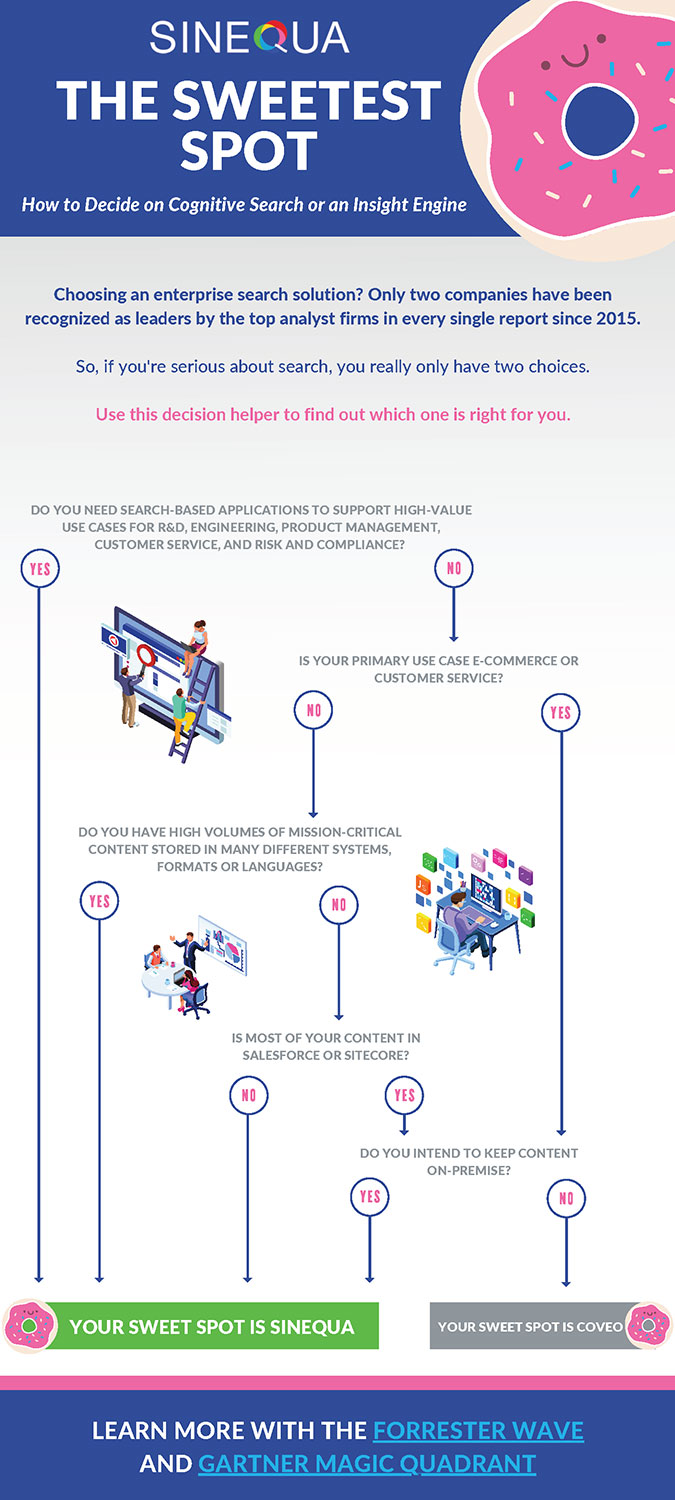Strategic Search isn’t Simple

Enterprise Search – the idea of using search to find information, expose related and similar content, and surface insights so employees can fully capitalize on the knowledge embedded within an organization – has many facets (pun intended). But that doesn’t mean that every facet needs to be explored – or even can be explored effectively – to know if it will work for you.
Martin White (Intranet Focus Ltd) published a piece with a related theme on CMSWire. His question is a good one: Can Enterprise Search be Reduced to Two Dimensions?
No, it can’t. But that doesn’t mean you need a protracted evaluation process with 70 decision criteria and a complicated Proof-of-Concept. If that approach always worked, we wouldn’t see such high failure rates in all software implementations.
Instead, if you understand the transformative nature of strategic search, there is a simpler way.
Be Careful How You Choose
The key is to understand that success won’t come because you’ve tested the most features against your list of requirements. Enterprise search is complex because information and its use, especially in organizations, is complex. You’re dealing with language, people, systems, and bureaucracies, both real and virtual. As a result, you can’t anticipate everything from day one.
Our customers often point out that the most valuable applications of search aren’t their first use case, or the second. The most valuable applications occur when search becomes strategic. That often comes later – and requires capabilities that weren’t the focus of the evaluation. Or capabilities that weren’t part of the evaluation at all.
Martin is right that it’s a system problem. Most connectors? Great. Fastest query time? Nice. Most filters? Cool. Yet, any one capability by itself is useless.
A strength in one area is not an indication of ability in other areas – and enterprise search is like a chain; it’s only as strong as the weakest link. That chain requires you to (among other things):
The Journey to Strategic Search
According to our customers, it’s often best to make the first implementation easy: go Agile. Don’t spend your nights and weekends writing requirements; outline what’s needed and dive in. Focus on a narrow use case for a limited number of users and a few content sources. See how it works in practice. Refine it. Stress-test it. Modify it according to all the feedback you receive.
This way you learn its strengths and weaknesses – and most importantly, its potential. And that potential is what drives the next implementation, one that’s more strategic – and offers even greater value.
What Success Looks Like
Let’s see this in action by looking at a global enterprise customer in the life sciences. Rather than trying to do everything at once, they started with a relatively simple goal: the ability for their research group to search across three existing repositories. This was up and running in eight weeks, and refined in twelve.
The ability to get to this information easily and quickly created demand for more – so other sources like external libraries and electronic lab notebooks were included. Result views were refined. Information cards were added.
A separate application was spawned from the first, with more focused content presented to a subset of scientists with a 360° view of a compound. Then they added an expert finder, to find knowledgeable people in addition to documents.
Next came other groups with more specialized information needs. For example, an application that allowed them – for the first time – to access doctor’s notes alongside clinical data. These notes had been recorded, but never used before – unstructured text lost in a system with no easy way to retrieve it.
From there the demand snowballed; once other teams realized what was possible with strategic Insight Applications powered by search, everyone wanted one. Now they have a backlog of over a dozen projects.
They could have never captured the requirements for all these applications up-front. They hadn’t even imagined them yet, and didn’t know they needed them. They did know they needed a G.O.A.T. to make their search strategic.
Decision Time: Avoiding Analysis Paralysis
We don’t think the evaluation of an enterprise search platform needs to be complicated. The analysts have separated the best from the rest, so all you have to do is understand which of the two G.O.A.T.s aligns with your needs.
As Martin points out, the similarities between Sinequa and Coveo are small compared to our differences. But those differences aren’t always obvious, so we’ve put together a decision guide to help you through the main differences. Search may not be simple, but selecting a platform to make it strategic can be.

If you’re serious about making search strategic, let’s talk.






